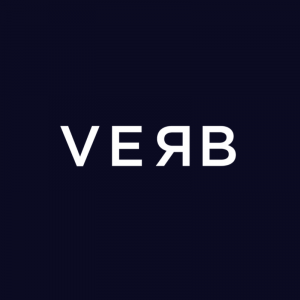Unlocking the power of organic UGC: Strategies for growing brand trust and sales

Reading time: 5 min
Organic user-generated content (UGC) is a powerful marketing tool that brands are increasingly using to build authentic connections to their customers.
Many luxury brands view user generated content as being as potential important as influencer content. Some worry that branded content featuring influencers is beginning to lose its effective and see user generated content marketing as its potential successor.
In this article, we cover:
- Where user generated content began
- Where potential customers, and you, can find UGC content
- Developing a UGC marketing strategy
- What to do with UGC once you’ve got it
- Measuring how well your UGC campaign is doing
The history of user generated content
User-generated content, or UGC for short, refers to content created by individuals rather than businesses.
UGC is older than you might think. It goes way back to articles and reviews on blogging sites twenty years ago. YouTube video is another example of user generated content.
Creators have been used in paid ad campaigns by luxury brands for many years. Common brand advocates are influencers and celebrities.
How UGC marketing is different to organic UGC
The fact that brands pay for this makes it different from organic UGC. Everyday users create UGC posts without any incentives or prompts from the brand.
This lack of commercial incentive on the part of the creators mean that many consumers view this organic content as being more authentic and reliable.
How consumers view organic UGC
Organic user generated content has the following advantages:
- Consumers trust it more than paid ads whether they feature “real people” or not, even when it’s lo-fi
- They view the experiences described by UGC creators as authentic and reflective of their real experience
- It’s powerful social proof as consumers increasingly trust the recommendations of their peers or people they identify with
Where potential customers can find organic UGC
The source of most organic UGC is on popular social media channels like Instagram, TikTok and YouTube. Social media platforms however are quite ephemeral and users posts disappear of timelines within hours unless they begin trending. Potential consumers so inclined can find your videos by searching through the platform. Although there is no SEO value to this content, this original content can drive many people to your website.
YouTube, unlike search engines however, is indexed by search engines, particularly Google, its parent company and does have SEO value. Content like this is far more valuable to a brand because it’s much easier for potential customers to find you through organic search.
Organic UGC can also be found on blogs, forums and other online communities where users share their experiences and opinions.
There is real added value in brands monitoring for mention of themselves and their products. Not only can they gain valuable insights into their customers’ needs and preferences but they also identify and re-use with permission high-quality organic UGC to enhance their marketing efforts.

Developing an effective user generated content marketing strategy
To develop a successful user generated content marketing campaign, you should take the following steps:
Decide what you want from UGC marketing
There will be certain nuances to any UGC marketing campaign but, in most cases when working with clients, they cluster around their common marketing objectives, namely:
- Increasing brand recognition
- Enhacing user engagement
- Build trust with the target audience
- Being perceived as authentic
- Driving organic traffic to your website
- Boosting sales and conversions
Sourcing and selecting organic content
How these targets are realised will vary slightly with a UGC campaign because you don’t have the control over output like you do with a paid ad campaign. Just because a member of the puublic does it doesn’t automatically mean its great content you want others to see.
When you find content about yourself, ask yourself:
- Would you want to feature that person in any UGC galleries or collections on your social media channels or website?
- Does this person follow trends or creates trends others follow?
- If you encourage them to create organic posts, blogs, videos and so on about you, are you confident you could exercise at least some sort of control over them?
If this is the type of person you would pay to promote you, that makes a big difference.
Sort out the legals
Now you’ve found that creator. People trust UGC and you know people would trust UGC made by him or her.
You’ve now got to go to legal. You need to obtain user consent, give appropriate credit to them and consider issues like copyright infringement and privacy. Brands should consult with legal professionals to draft or review their permissions and rights management strategy.
Make sure you take the necessary precautions and adhere to legal requirements or this could present a reputational risk.
What to do with organic posts from your unpaid brand advocates
What we like at VERB about working with UGC is that there’s so much you can do with it. We like how it not just delivers results now but how, in our opinion, it creates a stronger bond between a brand and their target audience, particularly important in the lifestyle-focused luxury sector.
Let’s look at some use cases now:
Unique hashtag campaigns
Big brands love unique hashtag campaigns. Nike’s #JustDoIt campaign, Coca-Cola’s #ShareACoke campaign, and McDonald’s #McDelivery campaign spring to mind.
Done well, hashtag campaigns increase brand recognition, user engagement, and even drive sales by encouraging users to create and share content related to the brand or product using the designated hashtag.
Creating a memorable hashtag is just the beginning in encouraging the creation of UGC marketing content. It has to be unique and capable of engaging partners and influencers. At the same time, it has to be broad enough to give people the freedom to produce creative, high-quality content that can be reused again and again.
Shoppable UGC
Shoppable UGC is user-generated content that has been transformed into a format suitable for e-commerce purposes to drive sales.
Monsoon have done this very weel with on-site galleries featuring customers wearing their outfits. Perhaps it was Quay Australia that started this trend though.
By featuring everyday people using your product, this delivers real social proof and prompot deeper user engagement increasing the likelihood of conversions. Other ways to convert user-generated content into shoppable content include adding product links within the content (great for inclusion of long-tail keywords too) and featuring customer reviews on products pages/ If you can get UGC video, even better.
Gamification
Take your potential audience with you on a journey featuring multiple engagement points where you ask them for UGC you can use elsewhere. Social media contests provide great examples of online gamification.
Reward users on their journeys with badges, levels, games, vouchers and more. This is a great way to use branded content as a gateway to encourage the creation of images, videos and more you can use in a UGC campaign.
Monitoring how your user generated content campaigns are doing
Like any paid ads campaign, you need to know how well content created by your target audience is performing.
How we do this for clients with user generated content includes:
Performance metric monitoring
As you do with pieces of content from paid ad campaigns, measure impressions, reach, engagement, clicks, conversions, sales and revenue for each individual UGC campaign item. [Related article: 35 Performance Marketing Acronyms]
Pay particular attention to those metrics most important to the success of your campaign as you’ve defined it. Over time, as with search engine and social media paid ads and onsite page collateral, you’ll have the data to decide which type of content works best in individual locations.
Scaling Successful Strategies
Now you know what works, experiment further to find ways to maximise to an ever greater extent their impact.
This could involve:
- Incorporating UGC content into product pages
- Adding it as social proof to your email marketing campaigns
- Repurposing specific UGC content for flash sales on certain products or ranges
- Compositing multiple videos to create a showreel
If something pulls particularly well on one channel, it’s worth finding out whether it does just as well on others.
Handling Negative Engagement
There are always “haters” on the Internet, particularly social media, so prepare yourself in the unlikely event that certain elements of your UGC campaign may not go to plan.
You’ll need to address negative comments carefully and discerningly to defuse certain situations. Doing so however will demonstrate your commitment to customer satisfaction.
We would always advice that you have a crisis management plan ready to deal with situations like these, even though it’s highly unlikely to happen. Often, your fan base – your brand advocates who don’t post UGC, will jump in on social media to defend against criticism or negative comments anyway (although, of course, don’t rely on this).
Incorporating user generated content into your marketing
Content created by customers draws people to your social media channels but it can do so much more for your brand. It’s original content that’s compelling and its central focus of real people engaging with your brand and its products tell a great story.
To find out more about how to incorporate user generated content into your marketing campaigns, please get in touch to speak with a member of our team. We look forward to working with you.









